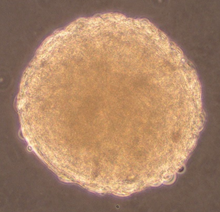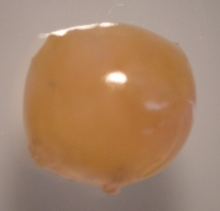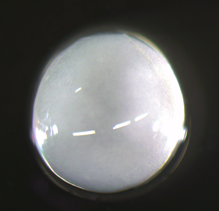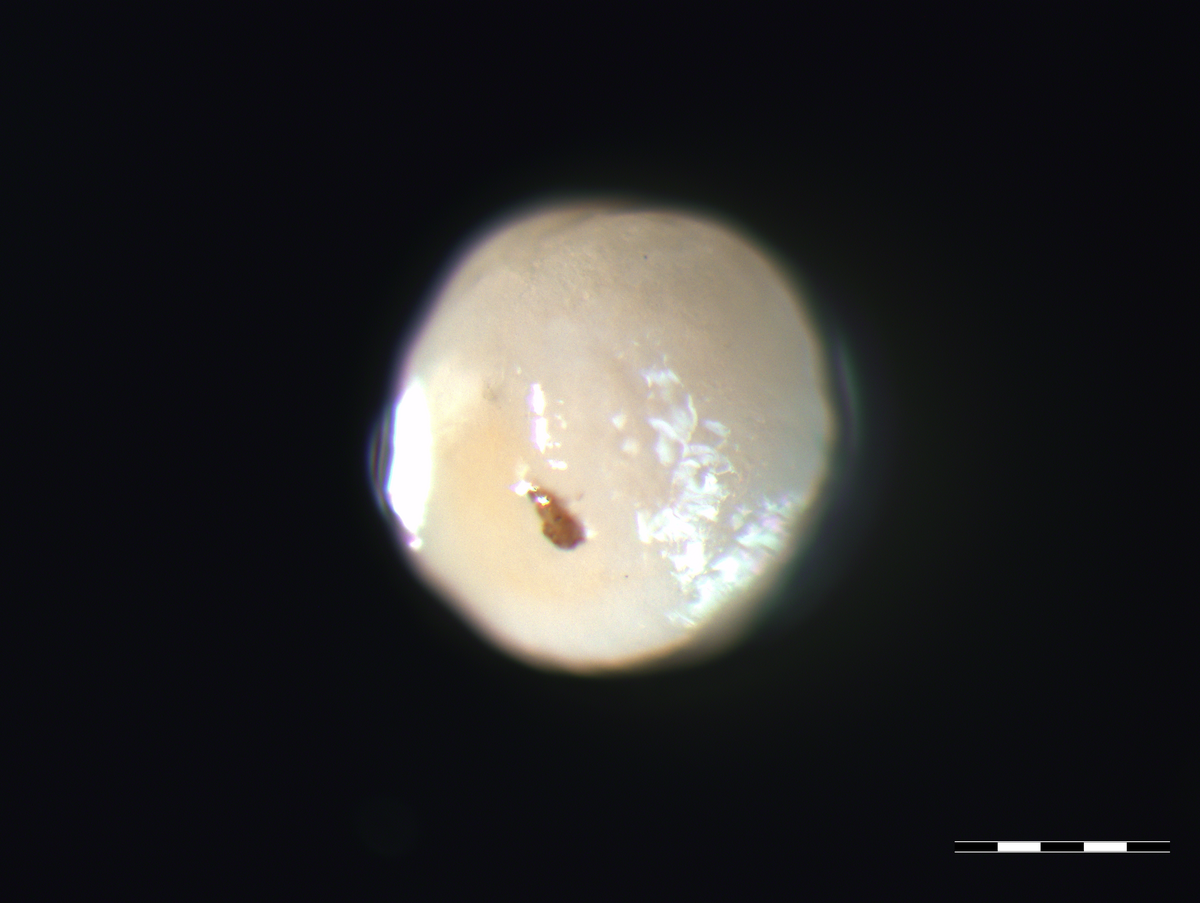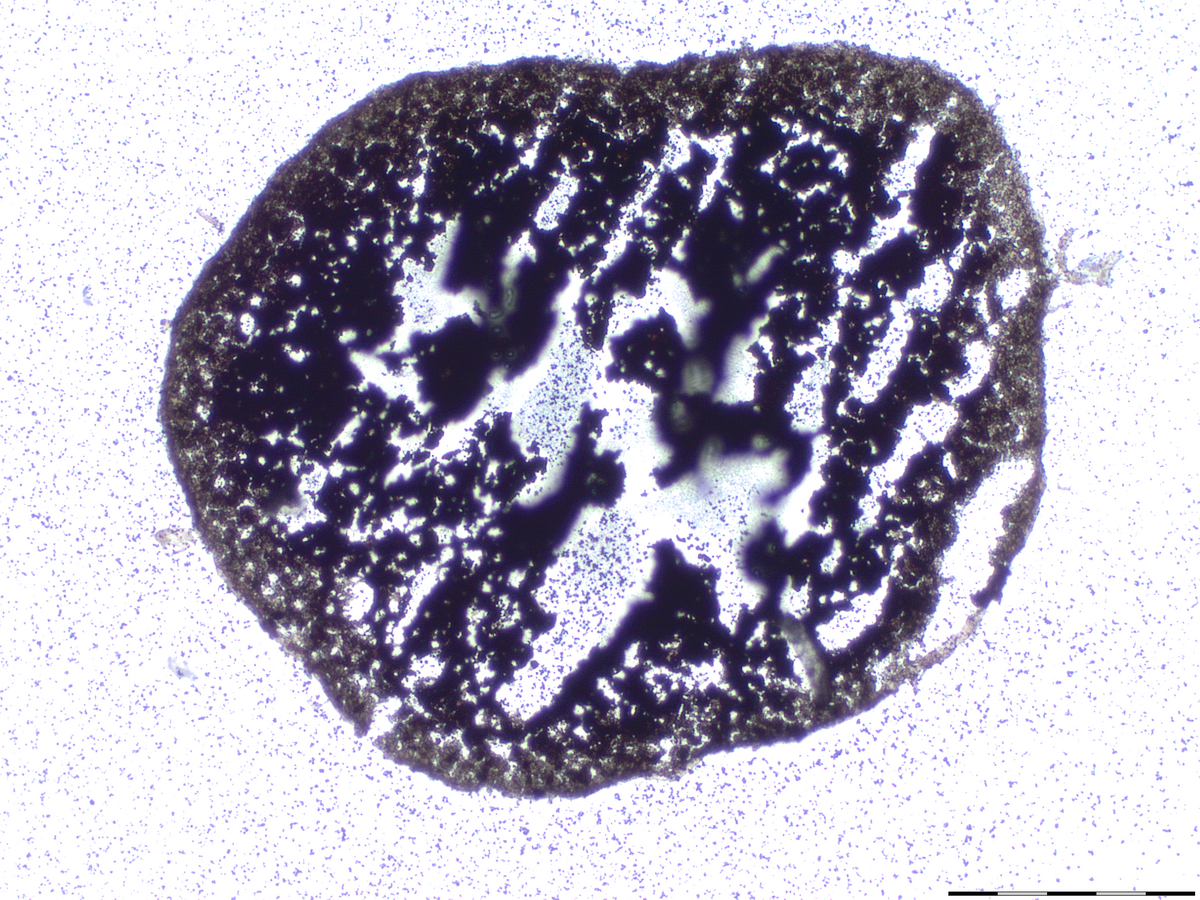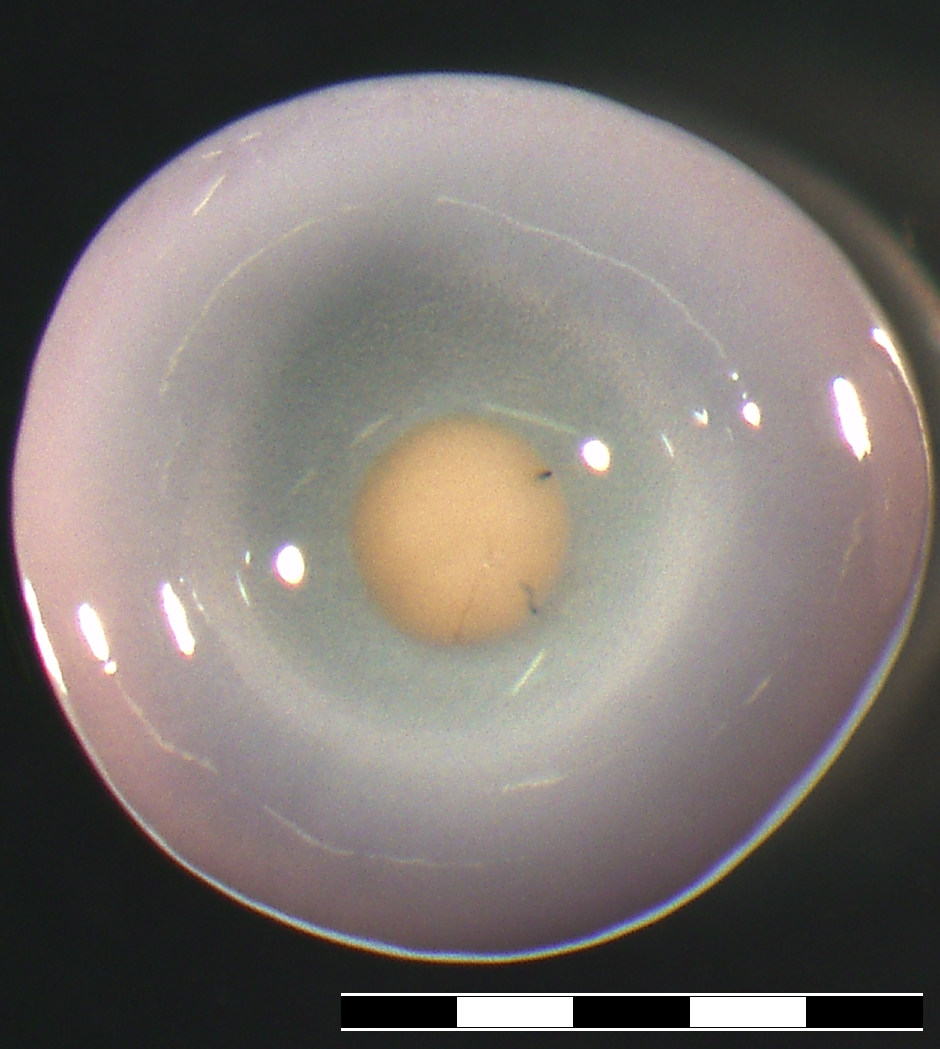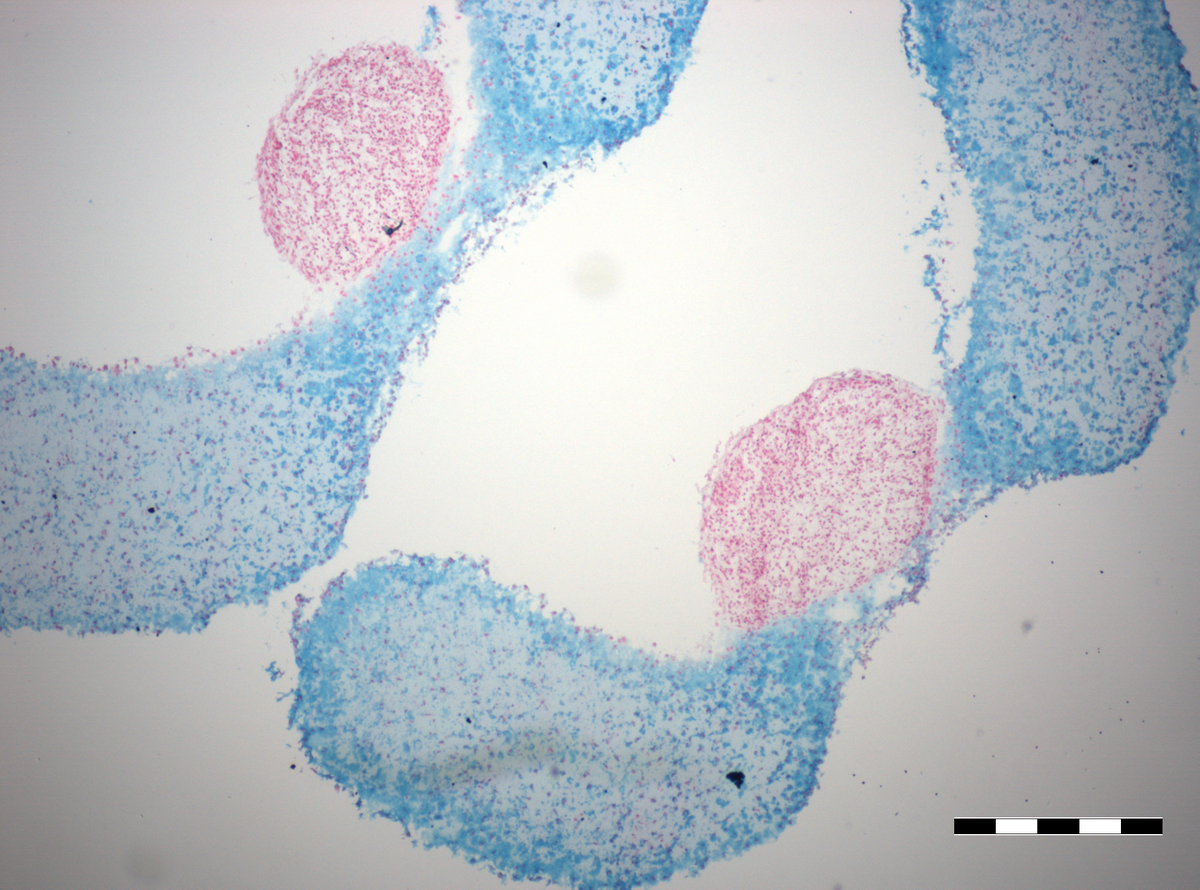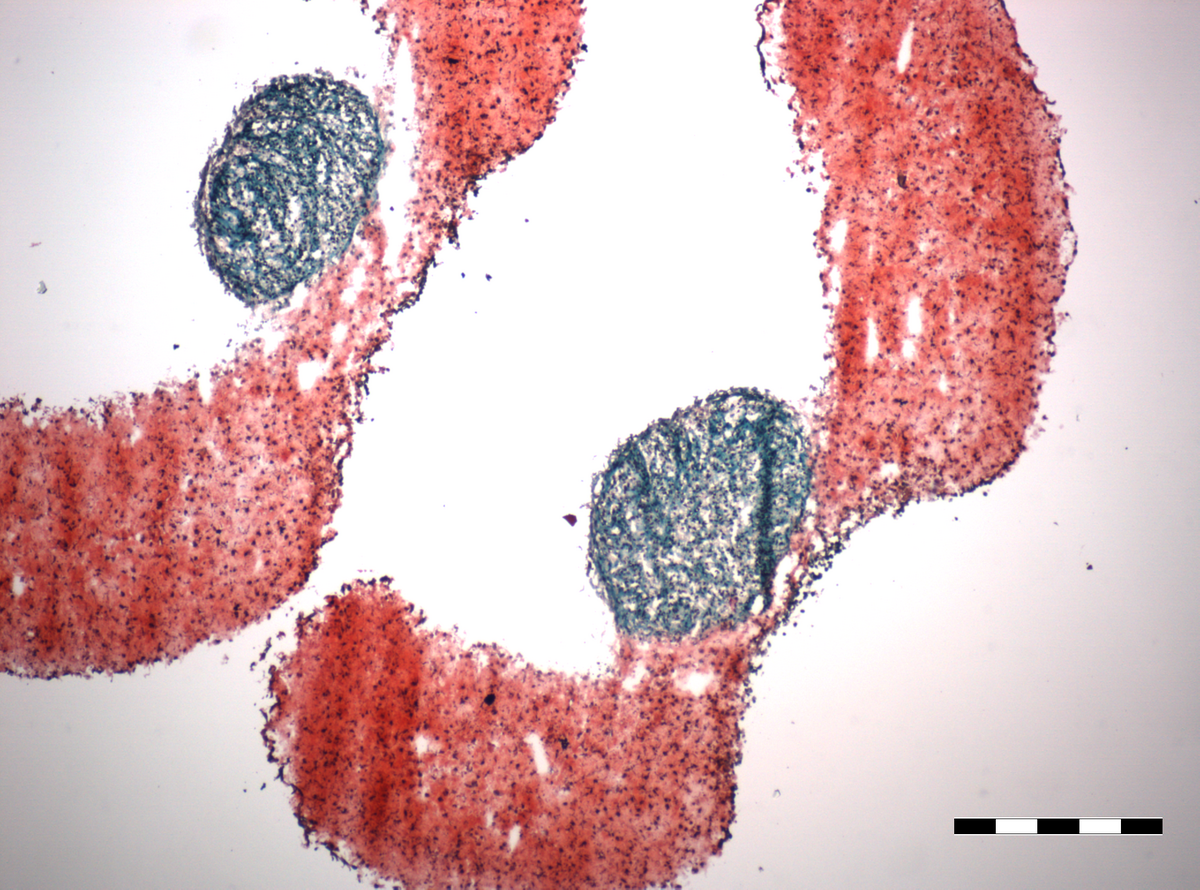Tissue engineering of in vitro cartilage tissue for cell-based therapies
Cell-based therapies to restore functional tissues are the primary goal of Regenerative Medicine. This can be achieved by application of single cells in suspension or by transplantation of tissues already produced in vitro.
Cartilage and bone tissues are important components in our joints. Traumatic injuries are often caused by sports activities i.e. soccer, skiing. If such cartilage damages are not treated, there is a high risk of developing osteoarthritis. Due to the lack of self-healing capacity of cartilage, there is a high demand for new therapeutic approaches to cartilage regeneration. The aim of research and development is to optimize the production process of "microtissues" for the regeneration of cartilage damage (e.g. trauma, osteoarthritis) using the body's own cells. Challenges here are the cultivation of freshly isolated cells from articular cartilage (primary cells), their proliferation in culture and chondrogenic differentiation in the "microtissue". The production of the in vitro tissues is carried out without carrier materials in order to generate a purely autologous product.
Is this therapy also suitable for elderly people?
Cell-based procedures are often the first choice for young people today, and many clinical trials are being performed worldwide. However, these therapies are only applied to individuals up to approximately 50 years of age. Unsolved problems for an application of this therapy for older patients include the question of proliferation capacity and differentiation ability of the cells. Our own preliminary work shows that cells from cartilage of elderly persons can be cultured and thus represent a potential source for cell-based therapies.
Can human serum be replaced in the medium without loss of differentiation?
For our human cell-based experiments, we primarily use human serum as media supplement. Although human serum most closely matches the physiological environment in vivo, it is complex, undefined, and batch-dependent. For this reason, we are testing various serum substitutes that have strictly defined compositions. Through this we expect a higher reproducibility of our experiments.
Is our cartilage technology also suitable for the production of bone mini-tissues?
Various approaches are used in research to generate the typical mineralized matrix with the aid of bone cells (mainly osteoblasts and their precursor cells). Either the cells are differentiated into support materials or as monolayers. So far, there are no scaffold-free minitissues corresponding to the cartilage minitissues we developed (see above).
The challenge here is the different way of matrix production of bone cells compared to cartilage cells. In cartilage cells, aggregation is an important starting point for chondrogenic differentiation. Bone cells, on the other hand, produce their mineralized matrix via apposition. Thus, the differentiation of bone cells using aggregation as a starting point must be optimized so that they also intrinsically produce the bone-typical matrix.
Another challenge is the time-consuming isolation of the bone cells. Especially with regard to a possible co-culture of bone and cartilage cells from the same patient, this isolation has to be optimized.
Development of an osteochondral in vitro tissue model
In addition to pure cartilage or bone defects, there are also deeper injuries, particularly in joints, that affect both tissues. But also in certain diseases such as osteochondritis dissecans, both tissues are often affected. These injuries can be treated by means of mosaicplasty, in which cartilage-bone cylinders are transplanted into the defect. However, these osteochondral cylinders must be removed from the patient from unloaded areas of the joint for this purpose. Our goal is to culture "microtissues" of cartilage cells with "microtissues" of bone cells after optimal chondrogenic or osteogenic differentiation in a composite and to generate osteochondral grafts. The challenge here is to find a common medium that supports both chondrogenic and osteogenic differentiation.
The establishment of cocultivation techniques with "microtissues" of both cell types is, among others, the goal of our PhD student Annemarie Ecke within her dissertation within the GRS cluster "REGproAGE".

